Trivia Browser
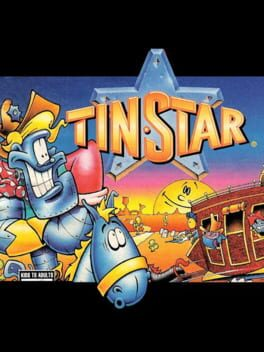
▲
1
▼
According to designer Ste Pickford, the reason Nintendo hired Software Creations to make Tin Star was as a form of compensation for not assigning them to do a follow-up to Ken Griffey Jr. Presents Major League Baseball despite them developing the original, with the sequel instead being developed by Rare as Ken Griffey Jr.'s Winning Run.
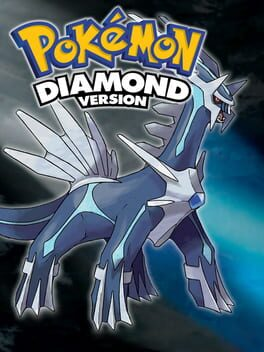
This trivia has been marked as "Not Safe for Work".
It may not be appropriate for all visitors and definitely isn't appropriate for work or school environments.
Click here to unhide it.
It may not be appropriate for all visitors and definitely isn't appropriate for work or school environments.
Click here to unhide it.
▲
1
▼
PC Gamer article:
https://www.pcgamer.com/games/rpg/pokemon-dev-game-freak-appears-to-have-suffered-a-teraleak-that-includes-25-years-of-never-before-seen-pokemon-art-assets-documents-and-even-canceled-movies/
Nintendo Life article:
https://www.nintendolife.com/news/2024/10/pokemon-developer-game-freak-reportedly-hacked-massive-amounts-of-data-allegedly-leaked
My Nintendo News article:
https://mynintendonews.com/2024/10/21/pokemon-mmo-leaked-codenamed-rodeo/
TheGamer article:
https://www.thegamer.com/game-freak-pokemon-leak-humans-pokemon-children-together/
PennLive article:
https://www.pennlive.com/life/2024/10/massive-pokemon-leak-exposes-personal-data-never-before-seen-lore.html
Forbes articles:
https://www.forbes.com/sites/danidiplacido/2024/10/14/pokmon-fans-dont-understand-the-game-freak-leaks/
https://www.forbes.com/sites/paultassi/2024/10/14/pokmons-typhlosion-goes-viral-after-game-freak-leak-for-the-weirdest-possible-reason/
Link to the leaked scrapped Sinnoh myths (in Japanese):
https://pastebin.com/x9Rne5iZ
The Cutting Room Floor article featuring English translations of the myths:
https://tcrf.net/Development:Pok%C3%A9mon_Diamond_and_Pearl/Documents
Veilstone's Myth and other Sinnoh myths:
https://bulbapedia.bulbagarden.net/wiki/Sinnoh_myths#Veilstone's_Myth
https://www.youtube.com/watch?v=ajRq8I6ZkHM#t=426s
Canadian indigenous myth of the Bear Mother:
https://www.historymuseum.ca/cmc/exhibitions/aborig/fp/fpz2f27e.html
https://www.sfu.ca/brc/our-work/imesh-mobile-app/indigenous-art-walk/bear-mother.html
The Dream of the Fisherman's Wife:
https://en.wikipedia.org/wiki/The_Dream_of_the_Fisherman%27s_Wife
https://www.pcgamer.com/games/rpg/pokemon-dev-game-freak-appears-to-have-suffered-a-teraleak-that-includes-25-years-of-never-before-seen-pokemon-art-assets-documents-and-even-canceled-movies/
Nintendo Life article:
https://www.nintendolife.com/news/2024/10/pokemon-developer-game-freak-reportedly-hacked-massive-amounts-of-data-allegedly-leaked
My Nintendo News article:
https://mynintendonews.com/2024/10/21/pokemon-mmo-leaked-codenamed-rodeo/
TheGamer article:
https://www.thegamer.com/game-freak-pokemon-leak-humans-pokemon-children-together/
PennLive article:
https://www.pennlive.com/life/2024/10/massive-pokemon-leak-exposes-personal-data-never-before-seen-lore.html
Forbes articles:
https://www.forbes.com/sites/danidiplacido/2024/10/14/pokmon-fans-dont-understand-the-game-freak-leaks/
https://www.forbes.com/sites/paultassi/2024/10/14/pokmons-typhlosion-goes-viral-after-game-freak-leak-for-the-weirdest-possible-reason/
Link to the leaked scrapped Sinnoh myths (in Japanese):
https://pastebin.com/x9Rne5iZ
The Cutting Room Floor article featuring English translations of the myths:
https://tcrf.net/Development:Pok%C3%A9mon_Diamond_and_Pearl/Documents
Veilstone's Myth and other Sinnoh myths:
https://bulbapedia.bulbagarden.net/wiki/Sinnoh_myths#Veilstone's_Myth
https://www.youtube.com/watch?v=ajRq8I6ZkHM#t=426s
Canadian indigenous myth of the Bear Mother:
https://www.historymuseum.ca/cmc/exhibitions/aborig/fp/fpz2f27e.html
https://www.sfu.ca/brc/our-work/imesh-mobile-app/indigenous-art-walk/bear-mother.html
The Dream of the Fisherman's Wife:
https://en.wikipedia.org/wiki/The_Dream_of_the_Fisherman%27s_Wife
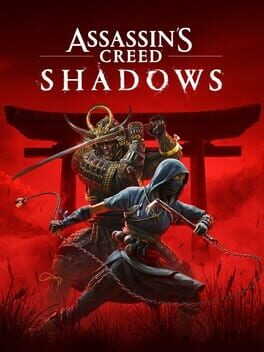
▲
3
▼
 In 2024, Ubisoft faced controversy over two instances related to the game's marketing prior to its release being delayed. The first instance revolved around them using a flag created by the Sekigahara Teppo-tai, a Japanese historical re-enactment group, as part of the game's concept art and marketing materials without the group's permission. Ubisoft Japan would later issue an apology for this, agreeing to remove the flag from the game's website, but stated that it would likely remain in the concept art as part of the game's printed art book, something that the Sekigahara Teppo-tai would later request be removed as well. On July 23, Ubisoft posted an apology to Twitter for including material in their marketing that "caused concern within the Japanese community".
In 2024, Ubisoft faced controversy over two instances related to the game's marketing prior to its release being delayed. The first instance revolved around them using a flag created by the Sekigahara Teppo-tai, a Japanese historical re-enactment group, as part of the game's concept art and marketing materials without the group's permission. Ubisoft Japan would later issue an apology for this, agreeing to remove the flag from the game's website, but stated that it would likely remain in the concept art as part of the game's printed art book, something that the Sekigahara Teppo-tai would later request be removed as well. On July 23, Ubisoft posted an apology to Twitter for including material in their marketing that "caused concern within the Japanese community".Two months after this statement, Ubisoft would face criticism again for a collectible figurine produced by PureArts featuring the protagonists Yasuke and Naoe standing in the ruins of a one-legged torii gate. This drew ire from critics who were already upset over Ubisoft's handling of the game's historical background, as the only known one-legged torii in Japan is located at the Sannō Shrine in Nagasaki. This torii was one of the few surviving structures after the United States' atomic bombing of the city in 1945. It became one-legged as a result of it being within 900 meters of the explosion's hypocenter, and serves as a local reminder of the bombing today. On September 24, just a few days after the figurine's announcement, Ubisoft cancelled their appearance at Tokyo Game Show for "various circumstances" (likely including these prior marketing controversies among other development factors) and later announced that the game's release would be delayed into the next year to allow for more time to polish it. PureArts' pre-order page for the figurine was removed from their website around the same time. They later released a statement on October 15 apologizing for the "insensitive design" and stated they would redesign the figurine for a later release.
Article about the flag controversy:
https://www.ign.com/articles/ubisoft-apologizes-to-japanese-historical-re-enactment-group-for-using-its-flag-in-assassins-creed-shadows-art-without-permission
Sekigahara Teppo-tai response:
https://www.ign.com/articles/ubisoft-apology-for-using-historical-re-enactment-group-flag-in-assassins-creed-shadows-not-enough-group-says
Ubisoft July 23 apology:
https://www.ign.com/articles/assassins-creed-shadows-team-issues-apology-to-japanese-fans-for-marketing-that-has-caused-concern
Torii gate figurine announcement:
https://www.instagram.com/pureartsofficial/p/DAL2YMAA5z3/
Figurine pre-order page:
https://www.purearts.com/en-eu/products/qlectors-assassins-creed-shadows-yasuke-naoe-pvc-figure
https://web.archive.org/web/20240922062525/https://www.purearts.com/en-eu/products/qlectors-assassins-creed-shadows-yasuke-naoe-pvc-figure
Article about the torii gate controversy:
https://www.tweaktown.com/news/100669/ubisoft-pulls-out-of-tokyo-game-show-after-mounting-assassins-creed-shadows-controversy/index.html
City of Nagasaki tourism page with information about the torii gate:
https://www.discover-nagasaki.com/en/sightseeing/117
Pull-out from Tokyo Game Show:
https://insider-gaming.com/assassins-creed-shadows-previews-delayed/
Delay announcement:
https://x.com/assassinscreed/status/1838971189722562906
PureArts statement:
https://www.eurogamer.net/assassins-creed-shadows-statue-pulled-as-company-behind-it-acknowledges-insensitive-design
https://www.ign.com/articles/ubisoft-apologizes-to-japanese-historical-re-enactment-group-for-using-its-flag-in-assassins-creed-shadows-art-without-permission
Sekigahara Teppo-tai response:
https://www.ign.com/articles/ubisoft-apology-for-using-historical-re-enactment-group-flag-in-assassins-creed-shadows-not-enough-group-says
Ubisoft July 23 apology:
https://www.ign.com/articles/assassins-creed-shadows-team-issues-apology-to-japanese-fans-for-marketing-that-has-caused-concern
Torii gate figurine announcement:
https://www.instagram.com/pureartsofficial/p/DAL2YMAA5z3/
Figurine pre-order page:
https://www.purearts.com/en-eu/products/qlectors-assassins-creed-shadows-yasuke-naoe-pvc-figure
https://web.archive.org/web/20240922062525/https://www.purearts.com/en-eu/products/qlectors-assassins-creed-shadows-yasuke-naoe-pvc-figure
Article about the torii gate controversy:
https://www.tweaktown.com/news/100669/ubisoft-pulls-out-of-tokyo-game-show-after-mounting-assassins-creed-shadows-controversy/index.html
City of Nagasaki tourism page with information about the torii gate:
https://www.discover-nagasaki.com/en/sightseeing/117
Pull-out from Tokyo Game Show:
https://insider-gaming.com/assassins-creed-shadows-previews-delayed/
Delay announcement:
https://x.com/assassinscreed/status/1838971189722562906
PureArts statement:
https://www.eurogamer.net/assassins-creed-shadows-statue-pulled-as-company-behind-it-acknowledges-insensitive-design
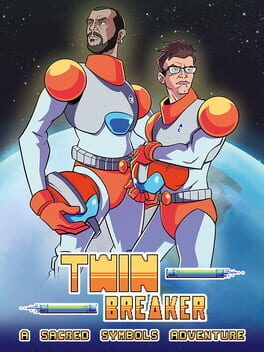
subdirectory_arrow_right Lillymo Games (Company)
▲
1
▼
Twin Breaker: A Sacred Symbols Adventure features characters based on Colin Moriarty and Chris "Ray Gun" Maldonado, the hosts of Sacred Symbols, a weekly podcast dedicated to discussing modern PlayStation consoles and games. Moriarty was credited as the game's writer, and would join developer Lillymo Games as its Chief Creative Officer three months after the game's release when he acquired a 49% minority stake in the company.
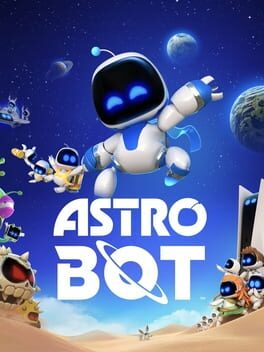
▲
2
▼
When Astro Bot released, many players noted how there was no reference to Cloud Strife from Final Fantasy VII despite how important that game was to the original PlayStation, or any sort of Square Enix content in the game for that matter. During an interview with Game File, Nicolas Doucet (studio head of Team Asobi) hinted that the team had considered adding a cameo from Cloud, but were unable to get permission from Square Enix, stating it was "difficult to comment on that".
Franchise: Tekken
▲
3
▼
Series director Katsuhiro Harada has admitted on multiple occasions that at one point, he tried to get Colonel Sanders, the founder and mascot of the fast food restaurant chain Kentucky Fried Chicken, as a playable guest character. He approached the Japanese offices of KFC to ask permission for Sanders to appear in Tekken, but was given a "bad look" upon proposing the idea and it was shot down.
2024 TheGamer interview:
https://www.thegamer.com/tekken-colonel-sanders-guest-fighter-shot-down-by-kfc-harada/
2021 EventHubs article:
https://www.eventhubs.com/news/2021/nov/27/angry-bird-colonel-tekken-harada/
2020 Xiaomist interview:
https://web.archive.org/web/20210622013205/https://www.xiaomist.com/2020/05/the-creator-of-tekken-visited-poland.html
https://www.thegamer.com/tekken-colonel-sanders-guest-fighter-shot-down-by-kfc-harada/
2021 EventHubs article:
https://www.eventhubs.com/news/2021/nov/27/angry-bird-colonel-tekken-harada/
2020 Xiaomist interview:
https://web.archive.org/web/20210622013205/https://www.xiaomist.com/2020/05/the-creator-of-tekken-visited-poland.html
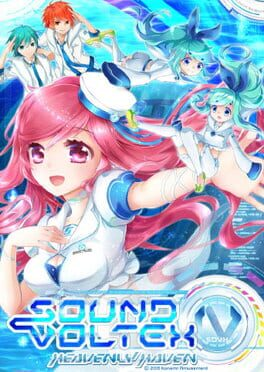
▲
1
▼
As part of "The 8th KAC Original Song Contest", several artists affiliated with independent music label HARDCORE TANO*C collaborated on a song known as "BATTLE NO. 1". However, the song was rejected from the contest. It's theorized this was due to the artists being credited as "TANO*C Sound Team", a jab at the controversial "BEMANI Sound Team" rebranding of BEMANI's internal composers. "BATTLE NO. 1" would later be featured in other rhythm games such as WACCA, Arcaea, and the Maimai series.
YouTube Video of BATTLE NO. 1 (beginning of title roughly translates to "FLOOR failed to support):
https://www.youtube.com/watch?v=xt9j6bXQzyc
RemyWiki Page on HARDCORE TANO*C (Trivia):
https://remywiki.com/HARDCORE_TANO*C#Trivia
SilentBlue Page on BATTLE NO. 1:
https://silentblue.remywiki.com/BATTLE_NO.1
Gameplay of BATTLE NO. 1 in WACCA:
https://www.youtube.com/watch?v=o2nFOUoAQjM
Gameplay of BATTLE NO. 1 in Maimai:
https://www.youtube.com/watch?v=Znp7NwpFA7E
Gameplay of BATTLE NO. 1 in Arcaea (Also notes which composer is associated with each section):
https://www.youtube.com/watch?v=AmFPHNcqLG4
https://www.youtube.com/watch?v=xt9j6bXQzyc
RemyWiki Page on HARDCORE TANO*C (Trivia):
https://remywiki.com/HARDCORE_TANO*C#Trivia
SilentBlue Page on BATTLE NO. 1:
https://silentblue.remywiki.com/BATTLE_NO.1
Gameplay of BATTLE NO. 1 in WACCA:
https://www.youtube.com/watch?v=o2nFOUoAQjM
Gameplay of BATTLE NO. 1 in Maimai:
https://www.youtube.com/watch?v=Znp7NwpFA7E
Gameplay of BATTLE NO. 1 in Arcaea (Also notes which composer is associated with each section):
https://www.youtube.com/watch?v=AmFPHNcqLG4
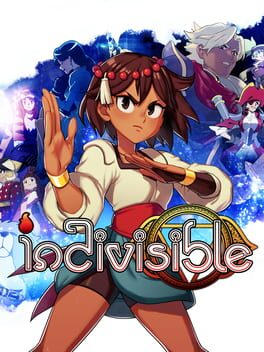
▲
2
▼
In July 2020, Deadline Hollywood announced that Indivisible would be adapted into a TV series for NBCUniversal's streaming service Peacock by writers and executive producers Meg LeFauve and Jonathan Fernandez. No further updates were given on its production, and it was presumably cancelled after the closure of developer Lab Zero Games two months later. It's not known if the adaptation would have been animated or in live-action.
Deadline Hollywood article:
https://deadline.com/2020/07/indivisible-meg-lefauve-jonathan-fernandez-adapting-video-game-tv-1202987599/
Lab Zero Games closure article:
https://www.gamesindustry.biz/lab-zero-games-lays-off-remaining-employees
https://deadline.com/2020/07/indivisible-meg-lefauve-jonathan-fernandez-adapting-video-game-tv-1202987599/
Lab Zero Games closure article:
https://www.gamesindustry.biz/lab-zero-games-lays-off-remaining-employees

subdirectory_arrow_right Digital Homicide Studios (Company)
▲
2
▼
On March 16, 2016, Digital Homicide's co-founder James Romine filed a lawsuit against video game critic Jim Sterling for "assault, libel, and slander" for releasing negative reviews of their output, starting with a review of their debut game The Slaughtering Grounds in late 2014, and sought $10 million in damages. Sterling had also accused the developers of deleting negative reviews from the game's Steam page and banning users who criticized it. This conflict would go on for almost a year, with the asking price being raised to $15 million at one point, until the parties settled and the case was dismissed with prejudice on February 21, 2017.
Article about the lawsuit:
https://kotaku.com/angered-game-developer-sues-game-critic-jim-sterling-fo-1765484317
The Jimquisition - "SLAUGHTERING GROUNDS - New 'Worst Game Of 2014' Contender":
https://www.youtube.com/watch?v=VfI7pAaOH9c
The Jimquisition - "WYATT DERP - And 17 Other Games From Digital Homicide":
https://www.youtube.com/watch?v=ZoNDahSe5J4
The Jimquisition - "The Slaughtering Grounds: A Steam Meltdown Saga":
https://www.youtube.com/watch?v=S6s0Wpn1zmU
Article about the lawsuit aftermath:
https://www.polygon.com/2017/3/2/14781112/jim-sterling-lawsuit-defamation-result
https://kotaku.com/angered-game-developer-sues-game-critic-jim-sterling-fo-1765484317
The Jimquisition - "SLAUGHTERING GROUNDS - New 'Worst Game Of 2014' Contender":
https://www.youtube.com/watch?v=VfI7pAaOH9c
The Jimquisition - "WYATT DERP - And 17 Other Games From Digital Homicide":
https://www.youtube.com/watch?v=ZoNDahSe5J4
The Jimquisition - "The Slaughtering Grounds: A Steam Meltdown Saga":
https://www.youtube.com/watch?v=S6s0Wpn1zmU
Article about the lawsuit aftermath:
https://www.polygon.com/2017/3/2/14781112/jim-sterling-lawsuit-defamation-result
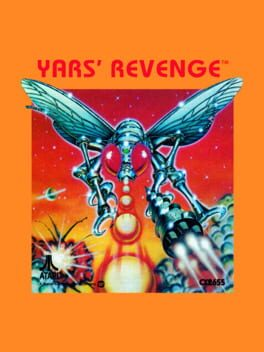
▲
2
▼
The graphics for the Neutral Zone are made up of bits and bytes of the actual program code for Yars' Revenge, laid out vertically, and counter-scrolling over each other. The game's creator Howard Scott Warshaw recalled in an interview with Digital Press that Atari feared showing the game's code on-screen would be a potential copyright violation, but Warshaw explained to them that "besides the scrolling, there was some X-Y and random color processing being done to it" to prevent the raw code from being displayed, stating that "if somebody could get the code from that, then they deserved it!" This same technique was employed by Retro Studios to create static noise textures during the development of the Nintendo GameCube game Metroid Prime.
Digital Press interview:
https://www.digitpress.com/library/interviews/interview_howard_scott_warshaw.html
Tweets in response to similar method in Metroid Prime, including reconfirmation of Neutral Zone backstory from Howard Scott Warshaw:
https://x.com/WaWaYanickP/status/1594563685996953600
https://x.com/HSWarshaw/status/1594590132639653889
https://www.digitpress.com/library/interviews/interview_howard_scott_warshaw.html
Tweets in response to similar method in Metroid Prime, including reconfirmation of Neutral Zone backstory from Howard Scott Warshaw:
https://x.com/WaWaYanickP/status/1594563685996953600
https://x.com/HSWarshaw/status/1594590132639653889
Collection: MySims
▲
1
▼
In 2010, development began on a MySims game for the Nintendo 3DS titled "MySims Friends", being made by Behaviour Interactive, the developers behind MySims Racing and MySims SkyHeroes. It would have featured extensive customization options (most notably the ability to customize the environment around you) and would have been an online-only game, requiring features such as StreetPass and Nintendo connectivity. It was cancelled after EA decided to move the The Sims franchise into a new direction, one that did not include the MySims series. Years later, art director Xavier Garcia would release pieces of concept art for the game.
NintendoEverything article:
https://nintendoeverything.com/ea-pulled-the-plug-on-mysims-friends-a-project-planned-for-3ds/
Concept art:
https://www.simsnetwork.com/news/2016/09/19/mysims-friends
https://nintendoeverything.com/ea-pulled-the-plug-on-mysims-friends-a-project-planned-for-3ds/
Concept art:
https://www.simsnetwork.com/news/2016/09/19/mysims-friends
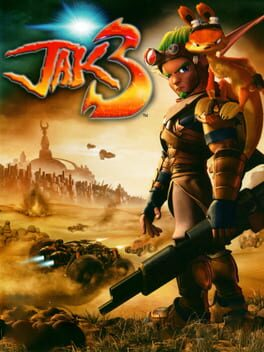
▲
2
▼
 Naughty Dog's name was inspired by their first company mascot Morgan, a Labrador/Rhodesian Ridgeback mix born in 1989 who was the pet dog of co-founder Jason Rubin starting with the development of Rings of Power. During the development of Way of the Warrior, Morgan lived with both Rubin and co-founder Andy Gavin in poor living conditions and she was often fed some of their meals from the fast food chain McDonald's. While she first appeared in a game as a Special Thanks credit in Rings of Power, Morgan technically became part of the company when she was given her own photo ID card after Naughty Dog moved onto the Universal Interactive Studios premises for the development of Crash Bandicoot. She was credited as a member of Naughty Dog on their four Crash Bandicoot games and Jak and Daxter: The Precursor Legacy. She died in 2002 at the age of 13 during the development of Jak II, and several tributes to her were put into Jak II and Jak 3.
Naughty Dog's name was inspired by their first company mascot Morgan, a Labrador/Rhodesian Ridgeback mix born in 1989 who was the pet dog of co-founder Jason Rubin starting with the development of Rings of Power. During the development of Way of the Warrior, Morgan lived with both Rubin and co-founder Andy Gavin in poor living conditions and she was often fed some of their meals from the fast food chain McDonald's. While she first appeared in a game as a Special Thanks credit in Rings of Power, Morgan technically became part of the company when she was given her own photo ID card after Naughty Dog moved onto the Universal Interactive Studios premises for the development of Crash Bandicoot. She was credited as a member of Naughty Dog on their four Crash Bandicoot games and Jak and Daxter: The Precursor Legacy. She died in 2002 at the age of 13 during the development of Jak II, and several tributes to her were put into Jak II and Jak 3.Jak II's manual and end credits feature a standard In Memoriam dedication for Morgan, but there are two more hidden tributes in the game. There is a green neon sign spelling Morgan's name written in the Precurian language inside the Hip Hog Saloon located to the left from the door. Additionally, in the Power Station in New Haven City, a set of random scrolling Precurian messages can be found on the large computer monitor. Translating these to English will reveal the following:
• "Morgan I miss you"
• "Morgan"
• "Thirteen years hard time"
• "There will never be another"
• "Good dog"
• "I will always love you"
Another message can be found on computer screens you can view at eye-level, which reads "Morgan is still missed even after a year has passed". These computer screen messages are re-used on the monitors in both the Power Station and the Freedom League buildings in Jak 3. Since Morgan's death, Naughty Dog have credited more pets as members of their team and/or company mascots, with the first successor being a Labrador puppy named Osiris who first appeared in the credits of the first Jak and Daxter game alongside Morgan.
Wired Magazine - February 1995 issue (page 46 in the magazine):
https://archive.org/details/eu_Wired-1995-02_OCR/page/n47/mode/2up
IGN article:
https://www.ign.com/articles/2013/10/04/rising-to-greatness-the-history-of-naughty-dog?page=4
Andy Gavin blog posts:
https://all-things-andy-gavin.com/2011/02/02/making-crash-bandicoot-part-1/
https://all-things-andy-gavin.com/2013/06/11/osiris-he-who-walks-in-the-west/
Rings of Power credits:
https://www.youtube.com/watch?v=-OvH3FFAIYs#t=473s
Crash Bandicoot credits:
https://www.youtube.com/watch?v=-WKCGCtYd3M#t=28s
Crash Bandicoot 2: Cortex Strikes Back credits:
https://www.youtube.com/watch?v=vfKXU_HfZGg#t=58s
Crash Bandicoot 3: Warped credits:
https://www.youtube.com/watch?v=GpvzveP3vSk#t=222s
Crash Team Racing credits:
https://www.youtube.com/watch?v=PXLkfyX71O0#t=27s
Jak and Daxter: The Precursor Legacy credits:
https://www.youtube.com/watch?v=J56g-ULzfBQ#t=37s
Jak II Morgan tribute:
https://www.youtube.com/watch?v=UCEzToJ3OK4#t=75s
Jak II manual (page 18 in the manual):
https://archive.org/details/ps2_Jak_II_USA/page/n19/mode/2up
Jak II credits:
https://www.youtube.com/watch?v=3pPv_heaDoY
Jak 3 Morgan tributes:
https://www.youtube.com/watch?v=TlXnkC3UyqU#t=93s
https://www.youtube.com/watch?v=0v6Z57aoWL8
Precurian to English guide source:
https://jakanddaxter.fandom.com/wiki/Precursor_alphabet
https://archive.org/details/eu_Wired-1995-02_OCR/page/n47/mode/2up
IGN article:
https://www.ign.com/articles/2013/10/04/rising-to-greatness-the-history-of-naughty-dog?page=4
Andy Gavin blog posts:
https://all-things-andy-gavin.com/2011/02/02/making-crash-bandicoot-part-1/
https://all-things-andy-gavin.com/2013/06/11/osiris-he-who-walks-in-the-west/
Rings of Power credits:
https://www.youtube.com/watch?v=-OvH3FFAIYs#t=473s
Crash Bandicoot credits:
https://www.youtube.com/watch?v=-WKCGCtYd3M#t=28s
Crash Bandicoot 2: Cortex Strikes Back credits:
https://www.youtube.com/watch?v=vfKXU_HfZGg#t=58s
Crash Bandicoot 3: Warped credits:
https://www.youtube.com/watch?v=GpvzveP3vSk#t=222s
Crash Team Racing credits:
https://www.youtube.com/watch?v=PXLkfyX71O0#t=27s
Jak and Daxter: The Precursor Legacy credits:
https://www.youtube.com/watch?v=J56g-ULzfBQ#t=37s
Jak II Morgan tribute:
https://www.youtube.com/watch?v=UCEzToJ3OK4#t=75s
Jak II manual (page 18 in the manual):
https://archive.org/details/ps2_Jak_II_USA/page/n19/mode/2up
Jak II credits:
https://www.youtube.com/watch?v=3pPv_heaDoY
Jak 3 Morgan tributes:
https://www.youtube.com/watch?v=TlXnkC3UyqU#t=93s
https://www.youtube.com/watch?v=0v6Z57aoWL8
Precurian to English guide source:
https://jakanddaxter.fandom.com/wiki/Precursor_alphabet
Collection: MySims
▲
2
▼
In 2008, an animated series based on the MySims series was announced as part of a deal between Electronic Arts and the United Talent Agency to turn their games into motions pictures and television shows, alongside a film based on the The Sims series announced the year prior. However, while The Sims film has since received numerous updates on its development, the MySims series has not been acknowledged since, suggesting it was eventually cancelled.
Platform: Nintendo Entertainment System
▲
2
▼
 Popular conceptions about Nintendo's release history in Europe claim that their hardware was never released in the former Eastern Bloc until the 21st century. Rather, these countries instead saw the proliferation of various clone consoles called "Famiclones", such as the Dendy (a Taiwanese-built bootleg that achieved widespread popularity in the Commonwealth of Independent States, made up of the ex-republics of the former Soviet Union) and the Pegasus (which became as popular in Poland as the Dendy did in Eastern Europe). However, while Famiclones did indeed dominate the Eastern European gaming market during the 1990s, Nintendo was not only aware of this, but actively attempted to halt the spread of bootlegs in these regions in favor of officially sanctioned products.
Popular conceptions about Nintendo's release history in Europe claim that their hardware was never released in the former Eastern Bloc until the 21st century. Rather, these countries instead saw the proliferation of various clone consoles called "Famiclones", such as the Dendy (a Taiwanese-built bootleg that achieved widespread popularity in the Commonwealth of Independent States, made up of the ex-republics of the former Soviet Union) and the Pegasus (which became as popular in Poland as the Dendy did in Eastern Europe). However, while Famiclones did indeed dominate the Eastern European gaming market during the 1990s, Nintendo was not only aware of this, but actively attempted to halt the spread of bootlegs in these regions in favor of officially sanctioned products.In 1994, Nintendo made a deal with Steepler, the Dendy's distributor in Eastern Europe, to permit continued sale of the Dendy in exchange for equal distribution of the Super Nintendo Entertainment System and Game Boy in the Commonwealth of Independent States; official Russian releases of these systems even included Dendy stickers on the packaging to reflect the arrangement. Meanwhile, in various other parts of the former Eastern Bloc, Nintendo made deals with other third-party distributors; among others, the NES, SNES, and Game Boy saw official releases in Poland, Hungary, and the former territories of Yugoslavia and Czechoslovakia during 1993–1994.
Joshua Rogers video about Nintendo in Eastern and Central Europe:
https://www.youtube.com/watch?v=q75Re7deJC0
Russian-language articles about the Nintendo/Steepler deal:
https://web.archive.org/web/20190427025842/https://www.kommersant.ru/doc/94004
https://web.archive.org/web/20240601223552/https://dtf.ru/games/970617-legenda-o-slone-kak-it-kompaniya-steepler-sozdala-dendy-i-osnovala-rossiiskii-konsolnyi-rynok
https://www.youtube.com/watch?v=q75Re7deJC0
Russian-language articles about the Nintendo/Steepler deal:
https://web.archive.org/web/20190427025842/https://www.kommersant.ru/doc/94004
https://web.archive.org/web/20240601223552/https://dtf.ru/games/970617-legenda-o-slone-kak-it-kompaniya-steepler-sozdala-dendy-i-osnovala-rossiiskii-konsolnyi-rynok
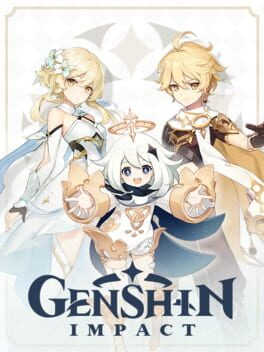
subdirectory_arrow_right Identity V (Game)
This trivia has been marked as "Not Safe for Work".
It may not be appropriate for all visitors and definitely isn't appropriate for work or school environments.
Click here to unhide it.
It may not be appropriate for all visitors and definitely isn't appropriate for work or school environments.
Click here to unhide it.
▲
2
▼
Article about controversy:
https://www.superpixel.com/article/5220/chinese-voice-actor-being-accused-cheating-manipulation-losing-his-leading-role-popular-dating-sim-game
Genshin Impact company's response:
https://gamingonphone.com/culture/genshin-impact-disappearance-of-fischl-might-be-related-to-the-chinese-voice-actors-adultery/
https://www.superpixel.com/article/5220/chinese-voice-actor-being-accused-cheating-manipulation-losing-his-leading-role-popular-dating-sim-game
Genshin Impact company's response:
https://gamingonphone.com/culture/genshin-impact-disappearance-of-fischl-might-be-related-to-the-chinese-voice-actors-adultery/
Collection: Marvel vs. Capcom
▲
2
▼
According to former series planner Atsushi "Tomichin" Tomita, the reason why earlier games were lacking when it came to alternate color palette variety was due to each palette needing Marvel's approval. During the development of X-Men: Children of the Atom, the only alternate palettes approved were minor variations of the 1P palette. Marvel loosened their restrictions over time however, and by the time X-Men vs. Street Fighter released, the team at Capcom were allowed to use completely different colors.
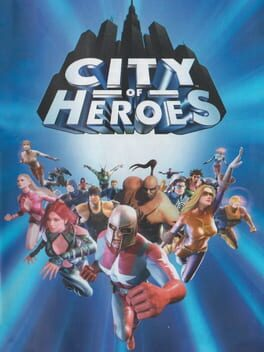
▲
2
▼
On April 15, 2019, it was discovered that a private server based on City of Heroes at the time of its shutdown had been running in secret for six years following the game's discontinuation. Three days later, the source code for this server was distributed, leading to the creation of a public server based on the code. Although this server was shut down by April 22 due to possible legal threats, multiple servers based on this code had since been set up. The most prominent of these offshoot servers was known as "Homecoming", who even went as far as to negotiate with NCsoft for the legal right to keep the server running. Years later, their efforts would pay off, as on January 4, 2024, it was announced that the team behind "Homecoming" had acquired a server license to run an official version of City of Heroes and its expansions, free to play and funded by donations.
Server discovery:
https://www.pcgamer.com/a-fully-functioning-city-of-heroes-private-server-has-somehow-been-kept-secret-for-six-years/
Public servers:
https://massivelyop.com/2019/05/04/city-of-heroes-now-has-a-fifth-rogue-server-live-homecoming-i24/
Homecoming partnership:
https://massivelyop.com/2024/01/04/ncsoft-has-officially-granted-a-city-of-heroes-server-license-to-the-homecoming-crew/
https://www.pcgamer.com/a-fully-functioning-city-of-heroes-private-server-has-somehow-been-kept-secret-for-six-years/
Public servers:
https://massivelyop.com/2019/05/04/city-of-heroes-now-has-a-fifth-rogue-server-live-homecoming-i24/
Homecoming partnership:
https://massivelyop.com/2024/01/04/ncsoft-has-officially-granted-a-city-of-heroes-server-license-to-the-homecoming-crew/
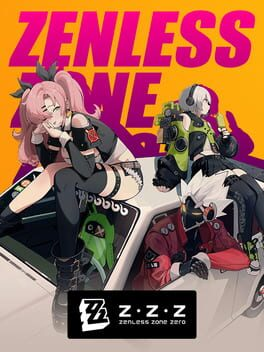
▲
1
▼
 The existence of a faction tentatively referred to as "Virtual Idols" was first leaked by an unknown party through illegal means of obtaining development data, including character design concept drafts. Rather than cover it up, however, the official Zenless Zone Zero bilibili account opted to reveal the group in a blog post and explain details about it. The idea first came about from students on the production team who had a fondness for idol culture and how they believe it can give people strength, giving descriptions on the individual members: "a lead singer who wants to ignite everyone's enthusiasm with her singing, an artist who is born to be the focus of the stage, and a creator with delicate emotions and great talent." They also expressed interest in making real virtual idols based on the group once the designs were finalized, and creating related projects such as character songs around them.
The existence of a faction tentatively referred to as "Virtual Idols" was first leaked by an unknown party through illegal means of obtaining development data, including character design concept drafts. Rather than cover it up, however, the official Zenless Zone Zero bilibili account opted to reveal the group in a blog post and explain details about it. The idea first came about from students on the production team who had a fondness for idol culture and how they believe it can give people strength, giving descriptions on the individual members: "a lead singer who wants to ignite everyone's enthusiasm with her singing, an artist who is born to be the focus of the stage, and a creator with delicate emotions and great talent." They also expressed interest in making real virtual idols based on the group once the designs were finalized, and creating related projects such as character songs around them.
Bilibili blog post (Note: source is in Chinese):
https://www.bilibili.com/opus/931089295663431683?spm_id_from=333.999.0.0
Pre-release livestream showing concept art for the Virtual Idols:
https://www.youtube.com/watch?v=uACgiN-216s#t=495s
https://www.bilibili.com/opus/931089295663431683?spm_id_from=333.999.0.0
Pre-release livestream showing concept art for the Virtual Idols:
https://www.youtube.com/watch?v=uACgiN-216s#t=495s
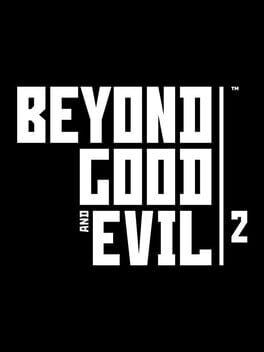
▲
1
▼
In September 2020, it was announced that the game's original director and series creator Michel Ancel would be retiring from the video game industry to focus on working for a wildlife sanctuary, but it was assured that development would continue without him. Later that month, the French newspaper "Libération" reported that several members of his team at Ubisoft Montpellier had accused him of acting abusive and unorganized, resulting in numerous delays and restarts since the game's announcement in 2008. This behavior was allegedly worsened by his simultaneous work on Wild (a big-budget game announced in 2014), preventing him from working on Beyond Good & Evil 2 with its team full-time. Although reports were submitted to company leadership as early as 2017, it was alleged that Ancel's relationship with Ubisoft co-founder Yves Guillemot prevented any major corrections from occurring until June and July 2020, when employees from all over the company came forward with sexual abuse and other misconduct allegations against high-ranking executives. Ubisoft would later comment that Ancel had not been directly involved in the game's development for "some time now" before his departure.
Ancel was interviewed as part of Libération's investigation. He claimed that Guillemot informed him that Ubisoft was investigating him in early August 2020, but claimed he was unaware that numerous team members blamed him for the game's development issues, and believed they were actually caused by long-term stress and burnout. He claimed to have resigned on his own accord and that his only regret was not finishing the game sooner. The newspaper claimed that the interview took place on September 18th, the same day that Ancel and Ubisoft's statements about the departure were released. One week later when the report and interview were published, Ancel denied all of the allegations in an Instagram post, calling the articles "fake news" and accusing the newspaper of publishing them as soon as possible to conflate them with the earlier Ubisoft allegations in June and July, over a month before Ubisoft's investigation into him allegedly began.
Ancel was interviewed as part of Libération's investigation. He claimed that Guillemot informed him that Ubisoft was investigating him in early August 2020, but claimed he was unaware that numerous team members blamed him for the game's development issues, and believed they were actually caused by long-term stress and burnout. He claimed to have resigned on his own accord and that his only regret was not finishing the game sooner. The newspaper claimed that the interview took place on September 18th, the same day that Ancel and Ubisoft's statements about the departure were released. One week later when the report and interview were published, Ancel denied all of the allegations in an Instagram post, calling the articles "fake news" and accusing the newspaper of publishing them as soon as possible to conflate them with the earlier Ubisoft allegations in June and July, over a month before Ubisoft's investigation into him allegedly began.
Libération report (first two articles in French):
https://www.liberation.fr/images/2020/09/25/jeu-video-les-coulisses-effarantes-d-un-blockbuster-geant_1800522/
Libération Michel Ancel interview:
https://www.liberation.fr/images/2020/09/25/michel-ancel-si-j-etais-reste-il-n-y-aurait-pas-eu-de-beyond-good-and-evil-2_1800385/
Michel Ancel departure article:
https://www.eurogamer.net/rayman-creator-michel-ancel-quits-video-games-industry-to-work-on-wildlife-sanctuary
Ancel departure Instagram post:
https://www.instagram.com/p/CFRbPpnqCxu
Accusations against Ancel:
https://www.vg247.com/report-michel-ancel-accused-of-abusive-disruptive-practices-on-beyond-good-evil-2
Ubisoft comment about Ancel's departure:
https://www.pcgamer.com/beyond-good-and-evil-creator-michel-ancel-quits-videogames-to-work-in-an-animal-sanctuary/
Kotaku article:
https://kotaku.com/report-beyond-good-evil-2-director-michel-ancel-left-1845184216
Ancel allegations denial Instagram post:
https://www.instagram.com/p/CFkrhX3KXu6/
Bloomberg article detailing roots of Ubisoft developer allegations before Ancel:
https://www.bloomberg.com/news/articles/2020-06-26/metoo-in-gaming-two-ubisoft-executives-placed-on-leave
https://www.liberation.fr/images/2020/09/25/jeu-video-les-coulisses-effarantes-d-un-blockbuster-geant_1800522/
Libération Michel Ancel interview:
https://www.liberation.fr/images/2020/09/25/michel-ancel-si-j-etais-reste-il-n-y-aurait-pas-eu-de-beyond-good-and-evil-2_1800385/
Michel Ancel departure article:
https://www.eurogamer.net/rayman-creator-michel-ancel-quits-video-games-industry-to-work-on-wildlife-sanctuary
Ancel departure Instagram post:
https://www.instagram.com/p/CFRbPpnqCxu
Accusations against Ancel:
https://www.vg247.com/report-michel-ancel-accused-of-abusive-disruptive-practices-on-beyond-good-evil-2
Ubisoft comment about Ancel's departure:
https://www.pcgamer.com/beyond-good-and-evil-creator-michel-ancel-quits-videogames-to-work-in-an-animal-sanctuary/
Kotaku article:
https://kotaku.com/report-beyond-good-evil-2-director-michel-ancel-left-1845184216
Ancel allegations denial Instagram post:
https://www.instagram.com/p/CFkrhX3KXu6/
Bloomberg article detailing roots of Ubisoft developer allegations before Ancel:
https://www.bloomberg.com/news/articles/2020-06-26/metoo-in-gaming-two-ubisoft-executives-placed-on-leave
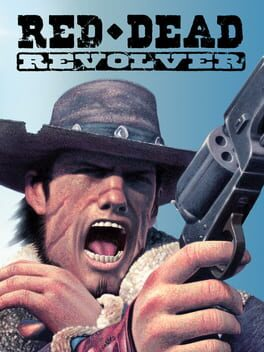
▲
1
▼
Red Dead Revolver originally began development with Capcom in 2000, when developer Rockstar San Diego was still known as Angel Studios. It started as "SWAT", a game with a four-person split-screen feature that allowed you to control four members of a S.W.A.T. team at once. Reportedly, after Capcom producer Yoshiki Okamoto watched the 1971 spaghetti western film "Blindman", the project quickly shifted to a western game, with "SWAT" now standing for "Spaghetti Western Action Title" before being renamed to Red Dead Revolver. After Angel Studios was acquired by Take Two Interactive in 2002 and renamed to Rockstar San Diego, they continued working with Capcom on the project until Capcom decided to cancel the game in 2003 due to a perceived lack of progress. Capcom eventually agreed to let Rockstar Games continue working on Red Dead Revolver the same year in exchange for having exclusive publishing rights in Japan.